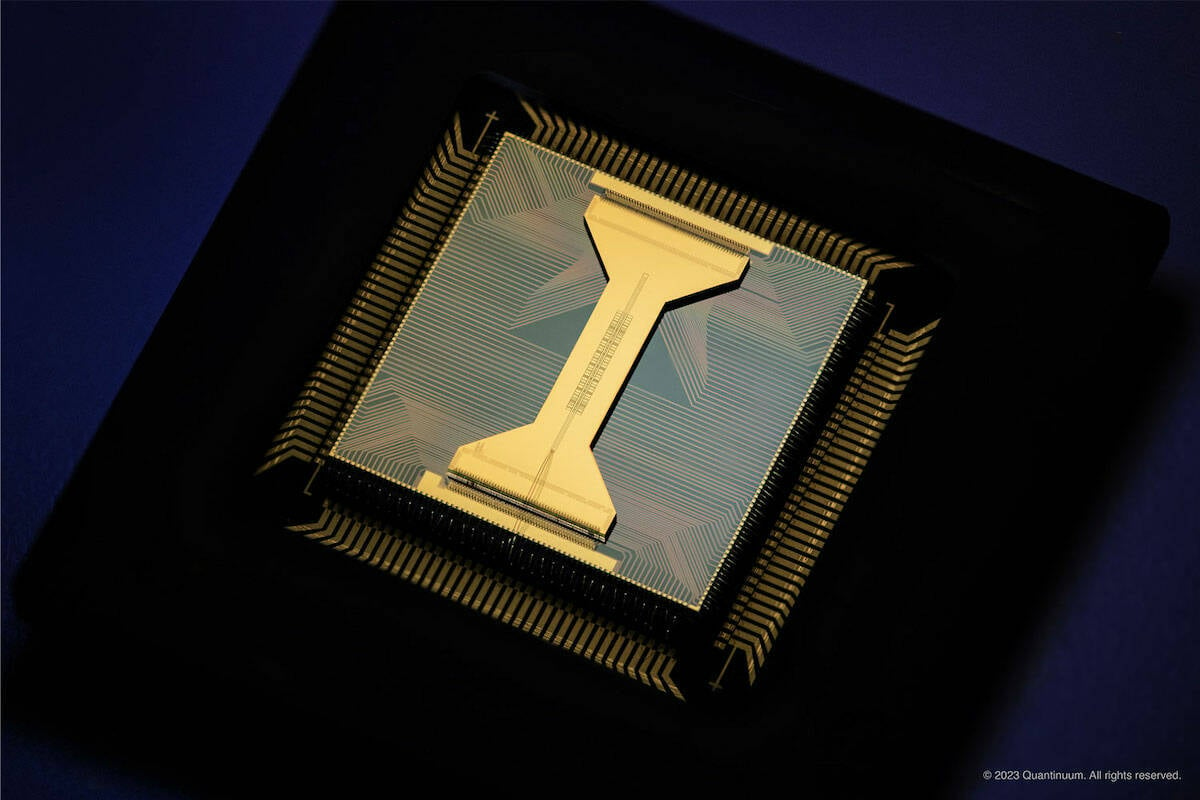Quantum Computing Eggheads Throw Some Other Qubits At The Wall To See What Sticks

Japan's government scientific research institute Riken is hedging its bets on quantum computing with the deployment of Quantinuum's trapped-ion H1 systems at its facility in Wako, Saitama.
Riken aims to harness quantum computing as an accelerator for traditional high performance computing (HPC) applications. To do this the research institute is tying together all manner of quantum computing and annealing technologies with conventional supercomputing hardware, most notably its A64FX-powered clusters developed by Fujitsu.
Quantum computing is still very much in its infancy and no one is quite sure which method of harnessing qubits — the base unit of compute for these systems — will win out.
Quantinuum's H1 systems — developed in collaboration with Honeywell and being deployed by Riken — utilize a technology called trapped-ion quantum computing. These systems use electromagnetic fields to suspend charged particles in free space. Qubits are then stored in the electric state of each ion.
According to the H1 datasheet, each system can handle up to 20 trapped ion qubits, which can move between five intention zones where quantum operations are performed using lasers.
While 20 qubits might not sound like a lot, especially considering competing systems like IBM's Osprey system claim more than 400, it's worth noting that more qubits doesn't necessarily translate to higher performance.
In many respects, qubits are a bit like processor cores - core count doesn't tell you much about how much work each one can do. This is one of the reasons why IBM has shifted its focus to building lower qubit-count quantum processors that can scale out, with its Quantum-2 systems.
As we alluded to earlier, Riken's partnership with Quantinuum is hardly the laboratory's first foray into the quantum realm. In October, Riken completed the installation of Japan's first superconducting quantum computer built by long-time partner Fujitsu.
Deployed at the RQC-Fujitsu Collaboration Center in Wako, the system packs 64 superconducting qubits into a single integrated system. The setup is reportedly capable of 264 quantum superposition and entanglement states, which Riken claims will allow the system to conduct calculations on a scale too challenging for classical computers.
- 'Wobbly spacetime' is latest stab at unifying physics
- IBM takes a crack at 'utility scale' quantum processing with Heron processor
- Alibaba shuts down quantum lab, donates it to university
- Fujitsu says it can optimize CPU and GPU use to minimize execution time
Neither Quantinuum or Fujitsu's systems are designed to operate as standalone systems. Instead, the research outfit aims to accelerate the development of code that can leverage quantum computing as an accelerator for traditional supercomputers, similar to the way GPUs are used as accelerators today.
"Advanced quantum computers of NISQ are now moving into the practical stage as the number of qubits is increasing and the fidelity is improved," Mitsuhisa Sato, deputy director of the Riken Center for Computational Science, said in a statement.
"From the HPC point of view, quantum computers are devices that accelerate scientific applications conventionally executed on supercomputers and enable computations that cannot yet be solved by supercomputers."
Having said that, the general consensus is that practical applications of quantum computing are still years away from reality. In October, Fujitsu said as much, cautioning that a fault-tolerant system capable of generating reliable results was likely a decade or more away.
That hasn't stopped companies from pouring resources into quantum computing on the off-chance it bears fruit before then. Toyota, Hyundai, BBVA, BSAF, ExxonMobil are just of the few companies that have thrown their weight behind quantum computing and quantum adjacent technologies. ®
From Chip War To Cloud War: The Next Frontier In Global Tech Competition
The global chip war, characterized by intense competition among nations and corporations for supremacy in semiconductor ... Read more
The High Stakes Of Tech Regulation: Security Risks And Market Dynamics
The influence of tech giants in the global economy continues to grow, raising crucial questions about how to balance sec... Read more
The Tyranny Of Instagram Interiors: Why It's Time To Break Free From Algorithm-Driven Aesthetics
Instagram has become a dominant force in shaping interior design trends, offering a seemingly endless stream of inspirat... Read more
The Data Crunch In AI: Strategies For Sustainability
Exploring solutions to the imminent exhaustion of internet data for AI training.As the artificial intelligence (AI) indu... Read more
Google Abandons Four-Year Effort To Remove Cookies From Chrome Browser
After four years of dedicated effort, Google has decided to abandon its plan to remove third-party cookies from its Chro... Read more
LinkedIn Embraces AI And Gamification To Drive User Engagement And Revenue
In an effort to tackle slowing revenue growth and enhance user engagement, LinkedIn is turning to artificial intelligenc... Read more

